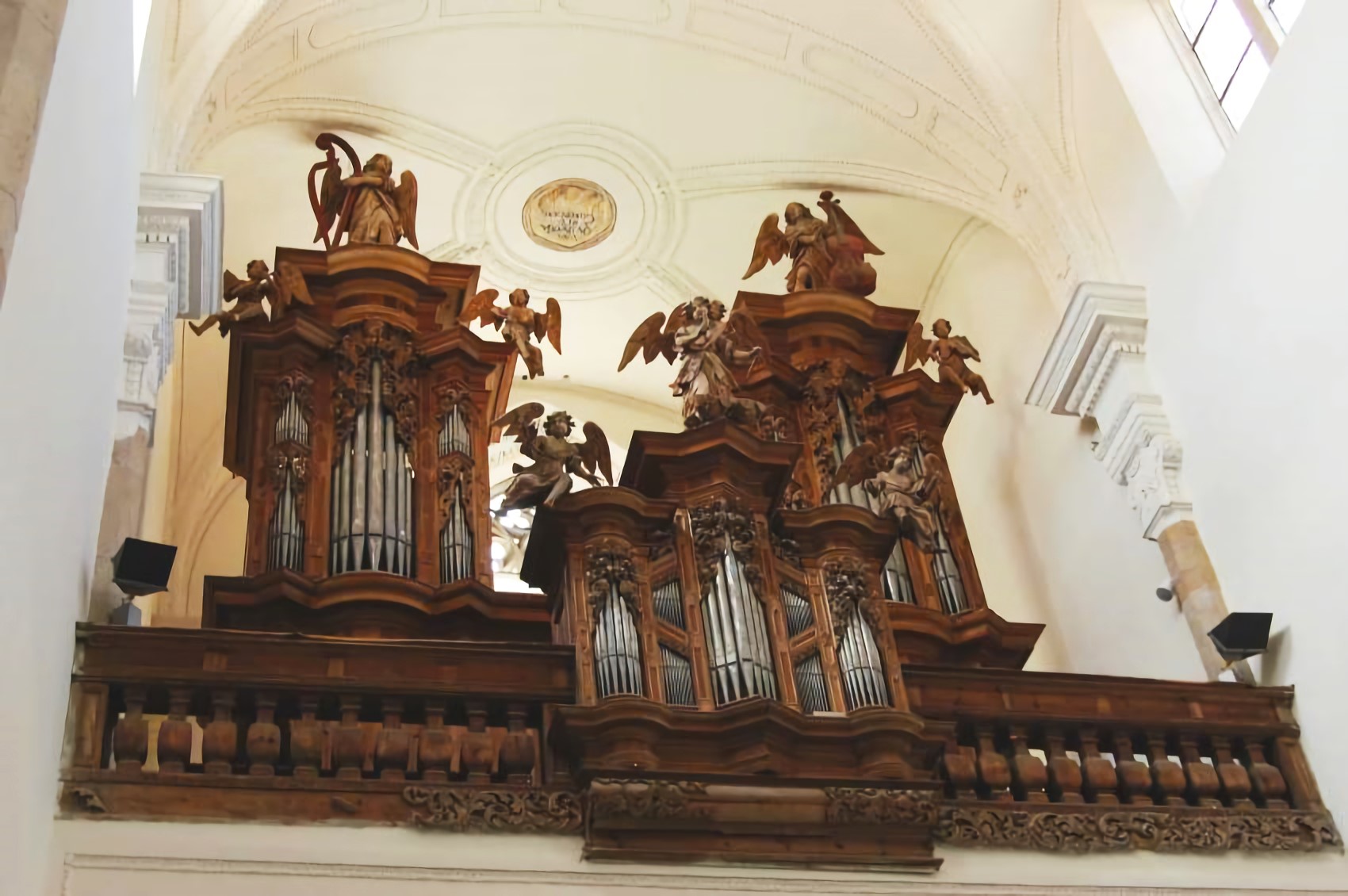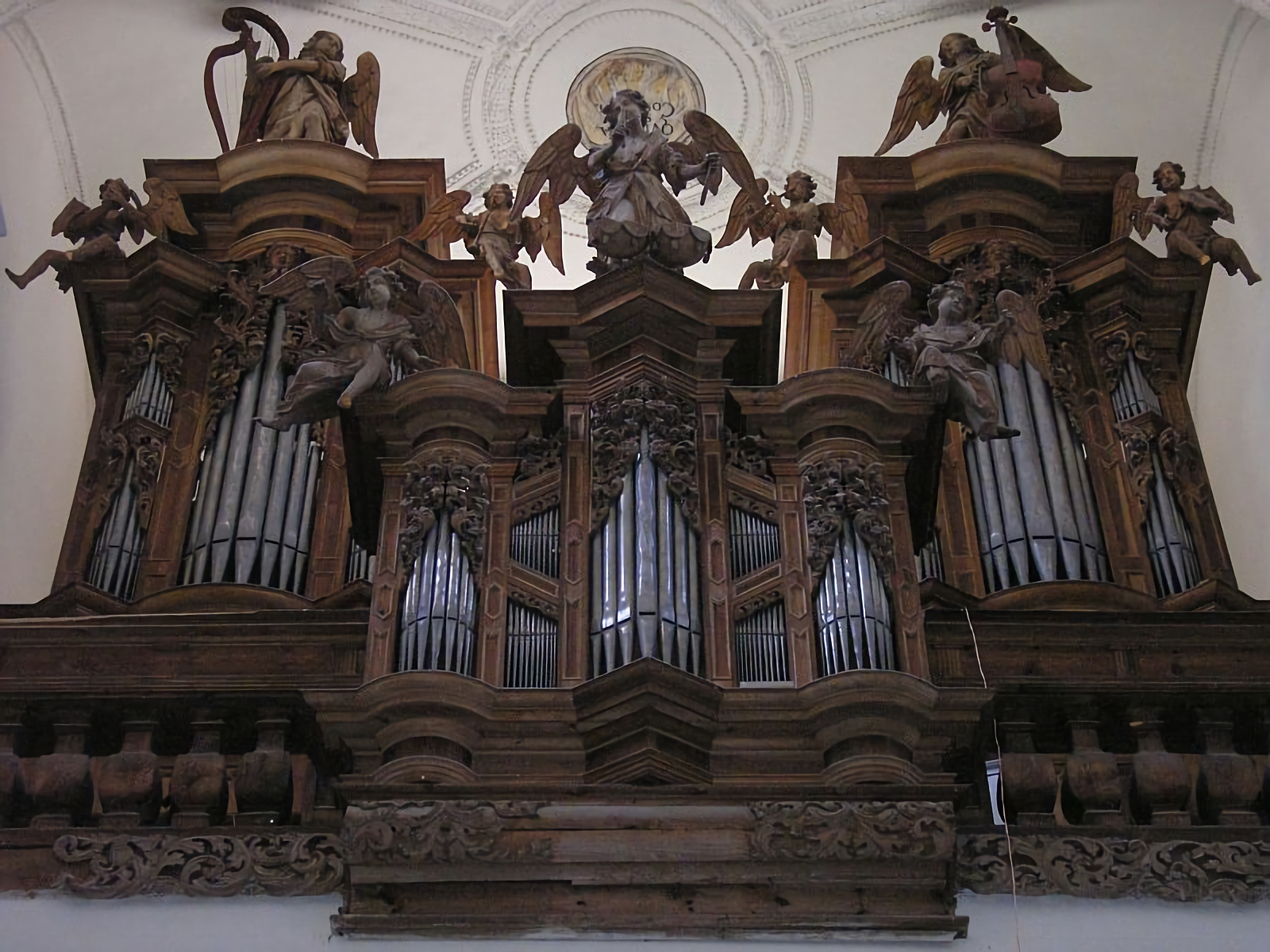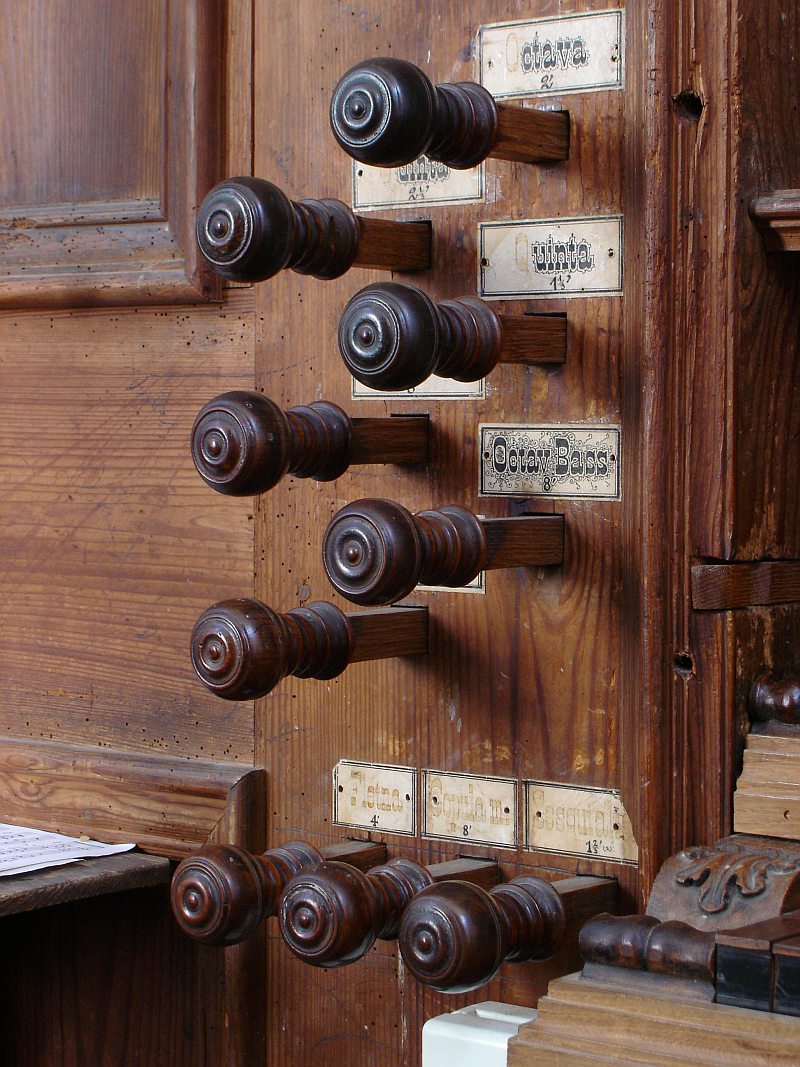Zlata Koruna, Nanebevzetí Panny Marie
| Builder | A. Starck |
|---|---|
| Year | ca. 1699 |
| Period/Style | Baroque |
| Stops | 20 |
| Keyboards | 2+P |
| Keyaction | tracker/mechanical |
| Sampleset |
Available
 , sampled by
Sonus Paradisi
, sampled by
Sonus Paradisi
|
The Monastery church of Zlata Koruna shelters a well preserved Baroque organ from 1698-1699. It was built by Abraham Starck z Lokte (1659-1709), the founder and the most prominent organ builder of so called Loket school. This school was functioning from the 17th to the beginning of 19th century.
There was a number of restaurations: 1898 J.Fischpera lowered the tuning by physically moving the pipes by a semitone. He also located the drawstops of the RückPositiv onto the stop jambs in the vicinity of the keyboards. Originally, these were placed directly on the RückPositiv itself - though behind the the organist. The original placement of the RückPositiv drawstops may still be observed on the picture.
Other, this time very unfortunate restoration, was done in 1941 by E. Hruby. He replaced some of the aliquote stops (both Quints in HW, Quint and Octave 2 in RP) by new "romantic" string stops of the fashion of that time. Besides that he changed the order of keyboards. Originally, the RückPositiv was played from the lower keyboard, the HW from the upper one. Now, the lower keyboard is the Hauptwerk and the RückPositiv is the upper one.
The original pipes were fortunately preserved, so the organbuilder Vladimir Slajch put them back to their original place during the latest restoration around the year 1984. The Baroque short octave is preserved up to the present times.
The pedal division offers one curiosity which is sometimes observed in the Czech Baroque organs. In the upper octave, the semitones play the lower octave as they are missing there because of the short octave mechanism.
There was a number of restaurations: 1898 J.Fischpera lowered the tuning by physically moving the pipes by a semitone. He also located the drawstops of the RückPositiv onto the stop jambs in the vicinity of the keyboards. Originally, these were placed directly on the RückPositiv itself - though behind the the organist. The original placement of the RückPositiv drawstops may still be observed on the picture.
Other, this time very unfortunate restoration, was done in 1941 by E. Hruby. He replaced some of the aliquote stops (both Quints in HW, Quint and Octave 2 in RP) by new "romantic" string stops of the fashion of that time. Besides that he changed the order of keyboards. Originally, the RückPositiv was played from the lower keyboard, the HW from the upper one. Now, the lower keyboard is the Hauptwerk and the RückPositiv is the upper one.
The original pipes were fortunately preserved, so the organbuilder Vladimir Slajch put them back to their original place during the latest restoration around the year 1984. The Baroque short octave is preserved up to the present times.
The pedal division offers one curiosity which is sometimes observed in the Czech Baroque organs. In the upper octave, the semitones play the lower octave as they are missing there because of the short octave mechanism.
| Hauptwerk | RückPositiv | Pedal |
|---|---|---|
| Principal 8' (Prospekt) | Copula 8' | Violon 16' |
| Bordun Fletna 8' | Principal 4' | Subbas 16' |
| Salicional 4' | Fletna 4' | OctavBass 8' |
| Octava 4' | Quinta 3' | QuintBass 5' |
| Quinta 3' | Octava 2' | ChoralBass 4' |
| Octava 2' | Sesquialtera 2x 1 1/3' | |
| Quinta 1 1/3' | Mixtura 3x (1') | |
| Mixtura 5x (1') |
1336250405-Hanff - Auf Meinen
0:00
0:00
1336250937-Hanff - War Gott
0:00
0:00
1339488194-CPE Sonate I Zlata K
0:00
0:00
https://www.sonusparadisi.cz/en/organs/czech/zlata-koruna.html
 Pipe Organ Map
Pipe Organ Map

